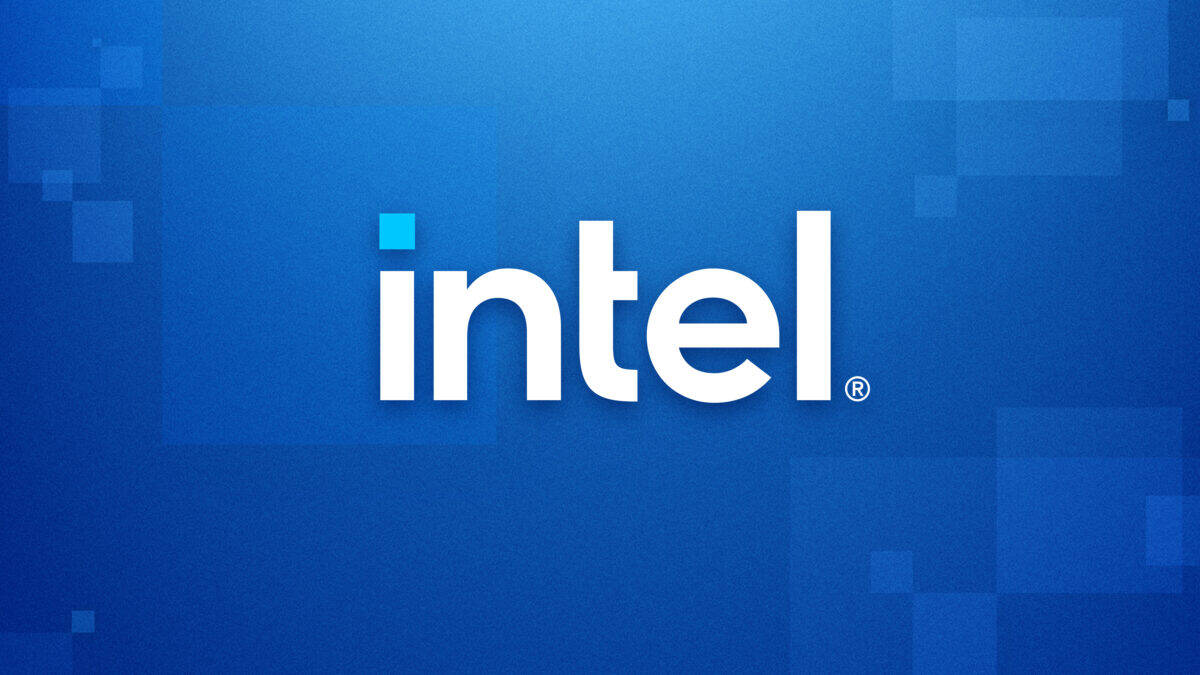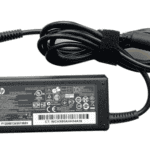Intel is preparing a clean break from its short-lived LGA-1851 socket with the official confirmation of LGA-1954, a brand-new platform set to debut alongside Nova Lake-S desktop CPUs in 2026. While LGA-1851 is still gearing up for its launch with Arrow Lake and its follow-up refresh, Intel’s next-generation ambitions are already pushing beyond, signaling a major platform overhaul with Nova Lake.

LGA-1851: A Brief Interlude
LGA-1851 will serve as the base for Arrow Lake (2024) and Arrow Lake Refresh (likely 2025) CPUs. Initially pitched as a stepping stone beyond Raptor Lake, Arrow Lake will bring improvements in efficiency and performance thanks to Intel’s Intel 20A process, ushering in RibbonFET and PowerVia technologies. However, it’s already clear that this socket won’t have a long-term future. According to leaked documentation and supply chain reports, LGA-1851 will not be compatible with Nova Lake, and by 2026, it will be phased out entirely.
This short lifespan puts LGA-1851 in the same category as LGA-1200—functional but ultimately transitional.
Enter LGA-1954: Built for the Future
Intel’s LGA-1954 socket isn’t just a pin increase—it’s an enabler for a dramatic architectural leap. Designed specifically for Nova Lake-S, LGA-1954 includes 1,954 contact pads, up from 1,851 on LGA-1851. While Intel has retained the same physical dimensions—45mm x 37.5mm—internal changes allow for improved power delivery, enhanced I/O, and support for a higher number of cores.
According to early documentation from motherboard vendors and supply chain insiders, LGA-1954 will support new 900-series chipsets, featuring technologies like:
- Wi-Fi 7 & Bluetooth 5.4
- DDR5-6400 (or faster) memory
- Thunderbolt 5 / USB4 v2
- Enhanced PCIe 5.0 & future PCIe 6.0 support
This positions LGA-1954 as Intel’s next true long-term socket for desktop CPUs—potentially lasting into the late 2020s.
Nova Lake-S: A New Architecture, Not Just a Refresh
Intel’s Nova Lake isn’t merely a continuation of the hybrid architecture used in Alder Lake through Arrow Lake. It’s expected to be a full architectural reboot, with a dramatically rebalanced core structure. Rumors point to a 52-core hybrid layout featuring:
- 16 Performance “Coyote Cove” cores
- 32 Efficiency “Arctic Wolf” cores
- 4 Low-Power cores for background tasks
These chips are also believed to feature modular chiplet design, combining compute tiles made on Intel 14A process with supporting tiles potentially outsourced to TSMC’s 2nm node. The combination of Intel’s most advanced process and external fab efficiency is intended to boost both performance and power efficiency.
Additionally, Nova Lake is likely to include dedicated AI accelerators (NPUs) designed for emerging workloads, from real-time video filters to generative AI apps, extending the utility of the CPU beyond gaming and productivity.

Cooler Compatibility and Upgrade Paths
One bright spot amid the platform shift: cooler compatibility. Intel appears to be retaining the same socket size and Z-height for LGA-1954, which means that many coolers built for LGA-1700 and LGA-1851 may still be usable with Nova Lake, pending mounting bracket support. This move is likely intentional, offering some continuity for system builders and reducing upgrade costs.
However, the motherboard will still need to be replaced, as LGA-1954 introduces a new socket design and likely requires new VRM and chipset designs to power the higher core count and AI features.
Intel vs AMD: A Tale of Two Socket Strategies
Intel’s decision to sunset LGA-1851 after only one generation contrasts with AMD’s more stable AM5 platform, which is expected to support CPUs through at least 2026 and potentially beyond. AMD’s long socket lifespan has become a selling point for users who want to upgrade CPUs without changing motherboards—a key reason why many enthusiasts remain loyal to Team Red.
Intel, by comparison, continues to prioritize agility and architectural flexibility, even if it means more frequent platform overhauls. For users chasing bleeding-edge performance, this may be acceptable—but it’s a significant factor for anyone trying to build a system with a longer upgrade cycle.
Looking Ahead
With Nova Lake and LGA-1954 confirmed for 2026, users considering a high-end build in 2024 or 2025 should weigh their options carefully. Investing in an LGA-1851 motherboard for Arrow Lake may be worthwhile for immediate performance needs, but upgraders will have to start fresh again in 2026 when the next big leap arrives.
Ultimately, LGA-1954 represents Intel’s vision for a more scalable and AI-accelerated desktop future—but it also underscores the company’s willingness to prioritize technological advancement over platform longevity.
Key Takeaways
- Intel’s Nova Lake CPUs will require a new LGA-1954 socket, while LGA-1851 will only support Arrow Lake and its refresh.
- CPU coolers may be compatible between both socket types due to similar physical dimensions.
- Users planning to build a PC with Arrow Lake should know the platform will have limited future upgrade options.
Intel Nova Lake CPUs and the New LGA-1954 Platform
Intel’s upcoming Nova Lake CPU lineup will introduce a new socket design while maintaining some backward compatibility for users. The shift to LGA-1954 marks another step in Intel’s CPU roadmap but comes with practical considerations for system builders.
Overview of Intel Nova Lake-S Desktop Processors
Nova Lake-S represents Intel’s next major desktop processor generation following Arrow Lake. These CPUs will succeed the Arrow Lake lineup and its refresh variants. Intel originally planned for the LGA-1851 socket to support multiple generations, but recent leaks suggest a change in strategy.
The Nova Lake architecture will likely bring performance improvements and new features compared to Arrow Lake. Intel appears to be positioning Nova Lake-S as a more significant upgrade that justifies a platform change rather than a minor refresh.
The timeline for Nova Lake’s release remains unclear, but it will follow after both Arrow Lake and its refresh variants have completed their market cycle. This gives current LGA-1851 platform owners some time before needing to consider an upgrade.
Comparing LGA-1954 Versus LGA-1851 Socket Designs
The most interesting aspect of the LGA-1954 socket is its physical dimensions. According to leaks, despite having 103 more pins than LGA-1851, the new socket will maintain the same physical dimensions as its predecessor.
This design choice brings a significant benefit: cooler compatibility between generations. Users upgrading from Arrow Lake to Nova Lake may be able to reuse their cooling solutions, saving money and reducing electronic waste.
The pin count increase (from 1851 to 1954) suggests Nova Lake will need additional connections for new features or power delivery. However, Intel has managed to maintain the same socket footprint through higher pin density.
This approach differs from past socket transitions which often required all-new components including coolers.
Motherboard Support and Platform Compatibility
The socket change means Nova Lake-S processors will require new motherboards with the LGA-1954 socket. Current and upcoming LGA-1851 motherboards will only support Arrow Lake and its refresh variants.
For consumers, this creates a clear upgrade path:
- Current platforms: LGA-1700 (12th/13th gen)
- Next platform: LGA-1851 (Arrow Lake)
- Future platform: LGA-1954 (Nova Lake)
Motherboard manufacturers will need to develop new products for the LGA-1954 platform. However, the similar physical dimensions might simplify some aspects of board design and production.
The cooler compatibility between LGA-1851 and LGA-1954 platforms offers a small but welcome bit of continuity in an otherwise changing ecosystem. System builders can factor this into their long-term upgrade plans when investing in cooling solutions.
Arrow Lake, Arrow Lake Refresh, and Platform Evolution
Intel’s CPU roadmap shows significant changes coming to desktop platforms. The transition from Arrow Lake to Nova Lake marks another socket change, continuing Intel’s pattern of platform evolution.
Arrow Lake and Arrow Lake-S: Features and Compatibility
Intel’s Arrow Lake and Arrow Lake-S processors represent the company’s latest desktop CPU offerings. These chips use the LGA-1851 socket, which replaced the previous LGA-1700 used for 12th and 13th generation processors.
Arrow Lake CPUs come with notable improvements in both performance and efficiency. They feature Intel’s latest P-cores (Performance) and E-cores (Efficiency) architecture. The lineup was first introduced as the “Core Ultra Series 2” branding, marking Intel’s shift toward a new naming convention.
These processors support DDR5 memory and PCIe 5.0, offering significant bandwidth improvements over previous generations. The performance gains come from architectural improvements rather than dramatically increased core counts.
LGA-1851: Use with Arrow Lake and Arrow Lake Refresh
The LGA-1851 socket debuted with Arrow Lake, but its lifespan appears shorter than expected. According to search results, this socket will only support Arrow Lake and its refresh variant.
Intel typically extends socket compatibility across multiple generations, but recent patterns show more frequent changes. The LGA-1851 socket introduced 100 more pins than its predecessor, enabling better power delivery and I/O capabilities.
The Arrow Lake Refresh will likely arrive before CES 2026, offering incremental improvements while maintaining compatibility with existing LGA-1851 motherboards. This gives consumers a potential upgrade path without requiring a full platform change.
Core Count, P-Core/E-Core Innovations, and Future Platforms
Arrow Lake continued Intel’s hybrid architecture approach with a mix of P-cores and E-cores. This design balances performance and efficiency by assigning tasks to appropriate core types.
The upcoming Nova Lake is rumored to dramatically increase core counts. Some reports suggest it could feature up to 52 cores, which would need improved power delivery systems. This explains the move to the new LGA-1954 socket with its additional pins.
Intel’s focus on increasing core counts reflects the industry’s push toward more parallel computing capabilities. The balance between P-cores and E-cores continues to evolve with each generation, allowing for better performance scaling across different workloads.
Roadmap: Panther Lake, Razer Lake, and Beyond
Intel’s roadmap extends beyond Nova Lake to include Panther Lake and potentially Razer Lake. These future platforms will likely build upon the foundation established with Nova Lake’s LGA-1954 socket.
Panther Lake is expected to arrive after Nova Lake, possibly in 2027. Details remain limited, but it will likely continue Intel’s focus on hybrid architecture with further refinements to both performance and efficiency cores.
The potential socket longevity for LGA-1954 remains uncertain. Intel might extend its use across multiple generations, unlike the short-lived LGA-1851. This would provide better value to consumers investing in the platform.
Industry watchers anticipate announcements about these future platforms at upcoming CES events, which have traditionally been Intel’s venue for revealing roadmap details and performance targets.
Frequently Asked Questions
Intel’s upcoming Nova Lake CPUs will bring significant changes to the desktop platform landscape. Here are answers to common questions about this new processor generation and its socket requirements.
What is the expected release date for the Intel Nova Lake CPUs?
Intel Nova Lake CPUs are expected to launch in late 2025 or early 2026. The company typically follows a yearly release cycle for its processor generations, with Arrow Lake launching in 2024 and an Arrow Lake refresh planned before Nova Lake arrives.
This timeline gives motherboard manufacturers sufficient time to develop new boards for the LGA-1954 socket.
Will there be backward compatibility between the LGA-1954 platform and older Intel CPUs?
No, there will not be backward compatibility between the LGA-1954 socket and older Intel CPUs. The new socket has different dimensions and pin counts compared to previous platforms like LGA-1851 and LGA-1700.
Users who want to upgrade to Nova Lake will need to purchase a new motherboard with the LGA-1954 socket. This represents a complete platform change rather than an in-socket upgrade.
What are the projected performance improvements of the Nova Lake CPUs over the Arrow Lake series?
Nova Lake CPUs are projected to deliver 10-15% better single-core performance and up to 25% improved multi-threaded performance compared to Arrow Lake. These estimates are based on Intel’s typical generational improvements.
The new architecture will likely focus on increased efficiency and better power management alongside raw performance gains. Intel is expected to maintain its competitive position against AMD’s processors.
What technological advancements are incorporated in the LGA-1954 platform?
The LGA-1954 platform will feature 1,954 active lands (contact points), a significant increase from LGA-1851. This allows for more power delivery, data pathways, and control signals to the CPU.
The socket maintains the same 24mm × 25mm dimensions as LGA-1851 but with more contact points. Other expected advancements include improved power delivery design, better thermal management, and support for faster memory standards.
Are there any planned chipsets or motherboards that will support the LGA-1954 socket?
Intel will likely introduce a new 900-series chipset family for Nova Lake CPUs. This would include high-end Z990 motherboards for enthusiasts, mid-range B960 boards, and budget H910 options.
Major motherboard manufacturers including ASUS, MSI, Gigabyte, and ASRock are expected to develop products for this platform. The new motherboards will likely support the latest PCIe standards and DDR5 memory.
How does the LGA-1851 socket differ from the new LGA-1954 in terms of design and capabilities?
The LGA-1851 socket has 1,851 contact points while LGA-1954 will have 1,954 points. Both sockets share the same 24mm × 25mm physical dimensions, allowing for similar cooling solutions.
LGA-1851 supports Arrow Lake and its refresh but lacks the electrical capabilities needed for Nova Lake’s power requirements and features. The LGA-1954 socket will enable more advanced I/O options and potentially higher power limits for improved performance.







